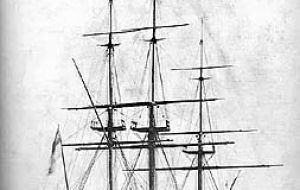MercoPress. South Atlantic News Agency
UNESCO calls for preservation of HMS Victory wreck
 HMS Victory
HMS Victory The head of the United Nations cultural agency today called for the preservation of a British man-o-war sent to the bottom of the English Channel by a storm in 1744 with all hands and, it is said, a sizeable gold treasure.
The discovery of the wreck of the HMS Victory was announced on 2 February by the explorers who found it off the Channel Islands, according to the UN Educational, Scientific and Cultural, UNESCO. "I am delighted that such an exceptional example of underwater heritage has been located. The cultural and scientific value of this artefact is considerable," said Koïchiro Matsuura, UNESCO's Director-General. He said that its preservation was particularly important in light of UNESCO's Convention on the Protection of the Underwater Cultural Heritage, which entered into force last month after it was ratified by 22 States. "In the spirit of the Convention adopted by UNESCO in 2001, I trust that all parties concerned will take the necessary measures to ensure this important vestige of British naval history is safeguarded and given appropriate attention, not used for commercial gain," he said. The United Kingdom has not joined the States Parties of the Convention to date, but it has expressed its willingness to comply with its Annex, which establishes ethical and scientific rules, widely recognized by archaeologists, for activities directed at underwater sites. When it sank, the massive Royal Navy vessel took around 1,000 men down with it, and, besides human remains, the ship is thought to contain a number of bronze cannons, historical artefacts and a sizeable shipment of gold. The rules of the Convention on underwater heritage state that commercial exploitation of underwater cultural heritage for trade or speculation is fundamentally incompatible with its protection and proper management, UNESCO said. They do allow, however, for work by professional archaeological services in conformity with recognized ethical and scientific rules and subject to the authorization of competent national authorities. Beside shipwrecks, the Convention aims to protect such sunken historical sites as the ruins of the Alexandria lighthouse and Cleopatra's palace in Egypt, part of ancient Carthage in Tunisia, and Jamaica's Port Royal, destroyed by an earthquake in 1692, as well as entire landscapes and rock art caves now at the bottom of the sea.




Top Comments
Disclaimer & comment rulesCommenting for this story is now closed.
If you have a Facebook account, become a fan and comment on our Facebook Page!